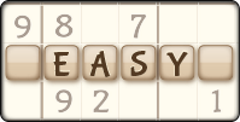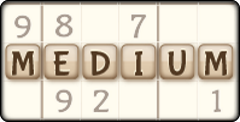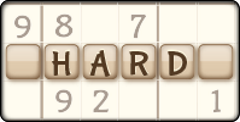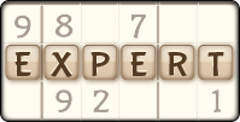What Is the Rule of 3 in Sudoku? Key Strategy Explained

Sudoku is an excellent way to exercise your mental agility, but it can sometimes be a very frustrating game if you’re not able to fill the board as quickly as you think you should. This is where the Rule of 3 comes in. So named because it is based around the three elements of rows, columns and grids, the Rule of 3 can help you solve any Sudoku board, regardless of difficulty. Let’s learn a little more about it!
How the Rule of 3 Works
Any Sudoku player will know the most basic rule of the game. Each number, from 1 to 9, can only appear once in each row, column, and 3x3 grid of the board. Once you know that, you can start to figure out where certain numbers can’t go. By a process of elimination, you can work out where they should be going, and bit by bit the game begins to fit together. Taking one number at a time and scanning the board, you can create a strategy that works out for you.
Identifying Key Patterns
Sudoku gives you all the clues you need to fill in the board. From there it is simply a matter of elimination and careful notes. With the squares that are filled in, you can look at any square and see what might still fit within it. The board may offer up Hidden Singles; that is to say, there will be some squares where there is only one number that can possibly go there. Your starting point within the game should be rows and grids that are already partially filled.
Applying the Rule in Puzzles
The key to using the Rule of 3 is to pick a specific number. It doesn’t matter which one. You can then, using a pencil, mark down in all the squares where that number can go. If you’re playing online, still use a pencil and paper to mark out the board and all the numbers already input. You may well end up with a lot of squares where almost anything can go, and that’s fine. The more you fill in, the more you know. The reason to pick one number is that it allows you to work systematically. Once you’ve worked through your first number, pick another and repeat.
Common Mistakes to Avoid
As you start to fill the board, you will gain in confidence, and here is where it is essential to avoid complacency. It may begin to seem as though you can fill squares at speed, but you need to be systematic, always ruling out available options until you are left with one possible correct answer. Don’t over-focus on the grid you are working in - look at how it interacts wih the others, ensuring that you don’t end up with the same number twice in a column or row.
Integrating with Other Strategies
As with any Sudoku strategy, the Rule of 3 works best when you apply it along with other knowledge. Being aware of how Naked Pairs work and applying a Block Interaction strategy can push you closer to getting the whole board filled sooner. One way to ensure you’re not overfocusing on one strategy is to transition regularly between trying to complete grids and trying to complete rows or columns. This will help you stay agile and avoid errors.
Practice Examples
Applying the Rule of 3 in practice is pretty simple. Let’s say you’ve picked 1 as your number. Look for any row that does not already contain a 1, and you can pencil it into the squares in that row. Now, does it appear in any columns you have checked? If it does, you can erase it from those columns, and the same goes for grids. Soon enough, you’ll have placed enough 1s to unlock useful knowledge about the whole board, and can repeat the process with number 2. It’s generally best to practice with easier boards, as it gets you used to the idea.
Tips for Effective Use
To make the most of the Rule of 3, there are a few pieces of advice that can be applied. Keep the following in mind:
- Work on less crowded areas first; you’ll reveal more information, more quickly, if you do this.
- Scan the board frequently; information that seemed useless a few minutes ago may become vital with another look.
- Stay patient and think systematically; work on one number at a time, or one grid, to unlock paths to completion.
Sudoku Levels
Seasonal Sudoku Games
More Games
Sudoku News
Disclaimer
DISCLAIMER: The games on this website are using PLAY (fake) money. No payouts will be awarded, there are no "winnings", as all games represented by 247 Games LLC are free to play. Play strictly for fun.





































